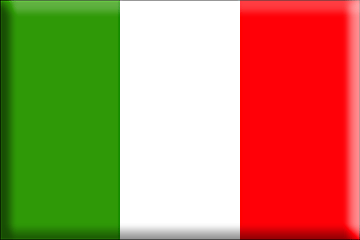Basic Italian rules
- Italiano4you

- Apr 29, 2019
- 2 min read

1. Nouns and Adjectives
We categorize nouns and adjectives as either masculine and feminine. Typically, nouns ending in -o are masculine, while nouns ending in -a are feminine.
Feminine: “Donna” (woman)
Masculine: “Uomo” (man)
If the noun ends in -i that means it’s masculine, but plural and nouns ending in -e are feminine, but plural.
Masculine: “Bambini” (children)
Feminine: “Ragazze” (girls)
2. Singular vs. Plural
Knowing how to create singular and plural nouns can be difficult. While there are a few tricks to remembering the rules, it’s really all about memorizing the endings. See examples below.
Nouns ending in singular -o switch to plural -i
“Amico” is changed to “Amici” (Friend, Friends)
Nouns ending in singular -a switch to plural -e
“Torta” is changed to “Torte” (Cake, Cakes)
Nouns ending in singular -ca switch to -che
“Mucca” is changed to “Mucche” (Cow, Cows)
Nouns ending in singular -e switch to -i
“Professore” is changed to “Professori” (Professor, Professors)
3. Introducing “The” Definite Articles (Singular)
Singular:
There are two main forms of the definite article in the singular, il (masculine) and la (feminine) and two alternate forms. l’ for any noun starting with a vowel, and –lo, for any masculine noun starting with s- plus a consonant, p-s, or -z. See examples below:
Masculine singular
Example: “Il gatto” (the cat)
Feminine singular
Example: “La gatta” (the cat)
Masculine noun starting with a vowel
Example: “L’uomo” (the man)
Feminine noun starting with a vowel
Example: “L’amica” (the friend)
Masculine noun starting with a -s plus a consonant
Example: “Lo Zio” (the uncle)
Plural:
Le is used to describe plural feminine
“Le Ragazze” replaces La or L’.
I is used to describe plural masculine
“I Ragazzi” replaces il.
Gli is used to describe plural masculine
“Gli Zii” replaces Lo or L’.
4. Indefinite Articles “A, An” Describing Nouns
Masculine nouns use “Un” before a vowel or consonant.
Example: “Un libro” (a book)
Masculine nouns use “Uno” before consonant beginning with -s, -z, -gn, -ps etc.
Example: “Uno specchio” (a mirror)
Feminine nouns use “Una” before consonant.
Example: “Una donna” (a woman)
Feminine nouns use “Un” before vowel
Example: “Un’attrice” (a actress)





Comments